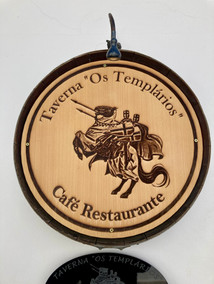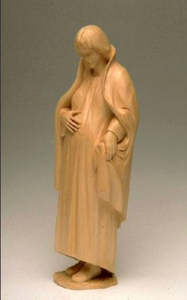Portugal - Monsaraz and Evora
- curvesandcracks

- Jun 8, 2024
- 5 min read
Today I'm going to take a walk through History.
Monsaraz
The hill of Monsaraz occupied an important place in prehistory and history. Its position on the highest hill in the region as well as its proximity to the deep Guadiana valley, made it a strategic place for all those who wanted to play Tug of War. It all started 9000 years ago.

Some definition
Prehistory: Period which goes from the appearance of Man, 2.8 million years ago, to the invention of writing. Since writing was not invented everywhere at the same time, prehistory does not end on the same date in each region of the world.
Neolithic: Last period of prehistory marked by agriculture and breeding. It replaces nomadism.
History: Period which begins with the invention of writing until... today.
Antiquity: Period from the invention of writing to the fall of the Roman Empire.
Monsaraz
Monsaraz is one of the oldest settlements in southern Portugal. The megaliths (stone constructions such as menhirs, dolmens, cromlechs, funerary temples, etc.) that have been found in the region are proof of this.
It was also a place of occupation by the Romans, the Visigoths, the Arabs, the Christians, the Jews and, after the "reconquest", by the Christians who expelled the Muslims and then the Jews. Let's say that for several millennia, it can get pretty hairy in this little corner of the countryside.
It's a city so steeped in history that it's impossible to cover it in one or a thousand posts. So, I will tell you two little stories that are part of the Big One.
Hard, hard to be Jewish
I have a friend to whom one can associate several adjectives. Economist, writer, New Yorker and... Jew. So, thanks to him, I learned a lot about the history of this people. Much being very relative, because I knew so little that even if I now know ten times more, it is still very little.
Expulsions are a recurring and characteristic element of Jewish history. Governments went about it in several ways and for various reasons: politics, religion, economics, etc, and all coercive means were good. Force them to convert, force them to leave or even attempt to exterminate them as we saw in Germany.
In 1496, it was Portugal's turn to expel the Jews. In fact, these have more than one choice:
To convert;
To be tried by the inquisition and burned at the stake;
Leave Portugal leaving all their possessions behind.
When the choice is to accept the unacceptable or die, do we still call that a choice?
At the same time, to encourage the undecided, more than 2,000 Jewish children were separated from their families and taken to the islands of São Tomé and Príncipe and Cape Verde, then colonies of Portugal, to serve as slaves, uh... workers...
Many die shortly after arriving on these islands.
Currently, there are no Jews in São Tomé and Príncipe... and there are only a few left in Cape Verde, who knows why?

This event is only one among thousands of others in the history of the Jews and despite everything I still hope, I always hope,... When man lives in love at last...
Quand les hommes vivront d'amour
Il n'y aura plus de misère
Et commenceront les beaux jours
Mais nous, nous serons morts mon frère
When man lives in love at last
All our sorrow will be over
The golden age shall come to pass
But we, we’ll be gone, my brother.
Monsaraz
The Cromlech of Xeres
My second little story concerns traces left by inhabitants between 5000 and 9000 years ago.
Very close to the hill of Monsaraz, there are the monuments of Cromlech of Xerez.
At first, I was very excited to see my first menhirs and, the more I learned, the more disappointed I became.
I imagined myself as Falbala receiving a nice big gift from Obélix, or as Claire Beauchamp disappearing into the twists and turns of time like in one of my favorite books, Outlander. I must come back to earth and take full measure of the disappointment that certain humans cause me.

Cromlech of Xarez
The current cromlech of Xarez is in fact a poor reconstruction of an ancient megalithic site, imagined and created from scratch using stones collected everywhere. Here is the story:
In 1969, a menhir was discovered south of Monsaraz by a local doctor, a very amateur archaeologist. He has already identified around fifty monoliths of different sizes in the surrounding area, some of which were sculpted and engraved; he then concluded, without any clearly established justification, that the whole corresponds to a dismantled megalithic enclosure.
In 1972, he moved the stones to "reconstruct" an enclosure in the shape of a quadrilateral, whose angles are aligned with the cardinal points, and placed the largest menhir in the center.
In 1998, an archaeologist analyzed everything and apparently saw no reason to contradict the conclusions of his predecessor which, let us remember, were only based on... nothing.
In 2004, after having been dismantled and stored for two years because a dam was going to engulf the site, the stones were reinstalled on a new site for the summer solstice and a few more were added to make it "pretty".
In 2024, during my visit, the site therefore corresponds to... nothing. A collection of stones gathered together without any archaeological basis. Of the 12 stones discovered in 1969, there are now 55, of which only seven have an engraved decoration.
I am disappointed with my visit to Cromlech... but even more disappointed with these people who call themselves experts.
However, the city of Monsaraz and its fortified castle on the hill are well worth the trip.

Cromlech of Xarez
Evora
I leave Monsaraz and head through a charming country lane towards Evora, a World Heritage treasure. It has preserved numerous palaces from a rich past which make it a museum of Portuguese architecture.
The Temple of Augustus
In the center of the city I notice magnificent marble columns. The temple was built in the 2nd century in honor of Augustus, adopted son of Julius Caesar.
In the Middle Ages, the temple was incorporated into a tower of Evora Castle and embedded in the walls of the medieval building. It was then used as a butcher's shop from the 16th century until 1836. It was finally rediscovered in 1871, and put on display for my viewing pleasure. The result is magnificent.
The wife, the mother,...
Here we come to a work of art that I particularly liked.
The Cathedral-Basilica of Evora was completed in 1250. It is the largest cathedral in Portugal. I go around it, go up to the roof, walk around and... finally I stop in front of the work that attracted me here. It is a sculpture, the Expectation of the Blessed Virgin Mary
These representations of Mary awaiting a happy event began to appear in the 13th century. 300 years later, the Council of Trent, an assembly of old men to give “Doctrinal responses to Protestant theories and reform of internal discipline”, prohibited what, in representations of the Virgin, was “false” doctrinally, “indecent » or “unusual”.
Therefore, they removed images of pregnant women from places of worship, because the men of the holy council forbid that we place in a church an image which recalls an "erroneous dogma" and which can "lead the simple astray". It seems that they had forgotten that they themselves were the result of the miracle of pregnancy.
In Quebec, we have two statues of the Expectation of the Blessed Virgin Mary sculpted by Jacques Bourgault, the great sculptor from St-Jean Port-Joli.
As a women and a mother, I am happy that this demonstration of femininity has its place in our churches. I believe that the expression of life is never a sacrilege.
I reread myself and realize that I am far too serious today. So, I will come back in the next post and tell you about my gluttony...
























Comments